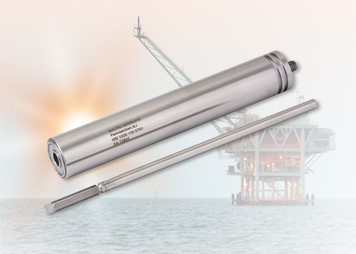Custom submersible LVDT position transmitters supplied by Bestech Australia feature major performance criteria for subsea/ marine applications, such as seawater corrosion-resistant, high-pressure, spring-loaded for use in a 5,000 psi pressure-balanced, oil-filled container.
Marco Sensor LVDTs have 316SS and Inconel 625 for pressure and corrosion resistance, the high reliability of the LVDT assembly ensures a long-lifetime operation (10+ years) even with the device fully exposed to seawater. A key design of the LVDT is zero leakage pressure sealing which is verified by helium mass spectrometer leak testing.
 Marco Sensor LVDTs have 316SS and Inconel 625 for pressure and corrosion resistance.
Marco Sensor LVDTs have 316SS and Inconel 625 for pressure and corrosion resistance.
These seawater corrosion resistant LVDTs offer extraordinary repeatability, compatible 4-20ma loop-powered electronics, signal feedback to surface from deep water for monitoring, recording, and controlling thrusters and ballast transfer pumps, they also ensure the control of “Christmas Tree” valves.
To ensure the ongoing stability of offshore drilling platforms, the structural integrity of production risers, catenary risers, tendons and platform legs and braces are constantly monitored. LVDT-based linear position sensors and gaging probes from Bestech Australia enhance the reliability by longitudinally mounting multiple redundant LVDT-based extensometers around the circumference of the structural member to monitor structural integrity. The extensometer housing can be outfitted with a variety of mechanical terminations to facilitate connection to the structural members.
For the huge loads on oil platforms, total movement being measured is typically less than 2mm. Macro Sensors LVDTs enabled measurement of the extension of the structural members to a fraction of a microstrain.
Sub-sea level measurement can be accomplished with the use of a pressure sensor that requires certain mechanical considerations in order to survive the environment. By calculating salt water density at 1.025 (or 2.5% more dense than fresh water at 4°C) a correlation between pressure and output signal can be made to measure the depth of the equipment. Typically an ROV (Remotely Operated Vehicle) is lowered into the ocean with the pressure port either installed inside an enclosure or completely exposed to the sea water. As the ROV is submerged, the water pressure is exerted on the diaphragm of the pressure sensor. The deeper the system is submerged, the higher the pressure.